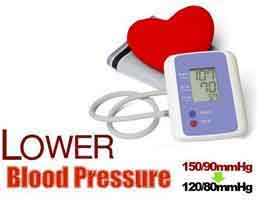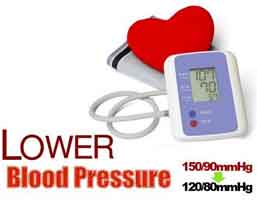Clinic readings may underestimate blood pressure during daily activities

24-hour ambulatory, or around-the-clock monitoring, during daily activities revealed undetected high blood pressure among otherwise healthy adults who had normal readings in the clinic. Healthcare providers should be aware that normal blood-pressure tests in the clinic may not rule out high blood pressure among otherwise healthy patients.
 Around the clock monitoring during daily activity revealed masked, or undetected, high blood pressure among otherwise healthy adults who had normal readings in the clinic, according to new research in the American Heart Association’s journal Circulation.
Around the clock monitoring during daily activity revealed masked, or undetected, high blood pressure among otherwise healthy adults who had normal readings in the clinic, according to new research in the American Heart Association’s journal Circulation.
The reverse of “white coat hypertension” (higher blood pressure readings at the doctor’s office than outside the clinic setting), “masked hypertension” is normal blood pressure in the doctor’s office but high readings outside of the office.
Masked hypertension is easy to miss, and can occur during the day or night. Masked hypertension is uncovered with 24-hour ambulatory, or around the clock, monitoring. Patients go about their daily activities while wearing a blood pressure cuff on their arm, attached to a small, portable device. Compared to clinic blood pressure, ambulatory blood pressure is recognized as a better predictor of future cardiovascular disease.
The common belief was that ambulatory blood pressure is usually lower than clinic blood pressure, in part because of the so-called “white-coat effect” caused by increased anxiety from clinic testing.
In this study, researchers compared clinic blood pressure measurements to ambulatory blood pressure monitoring in 888 healthy, middle-aged participants enrolled in the Masked Hypertension Study at Stony Brook University and Columbia University in New York between 2005 and 2012.
They found:
15.7 percent of participants with normal clinic blood pressure had masked hypertension based on ambulatory monitoring, regardless of sex, race, or ethnicity.
Younger, normal-weight participants were more likely than older, overweight participants to have ambulatory blood pressure readings higher than their clinic readings.
“These findings debunk the widely held belief that ambulatory blood pressure is usually lower than clinic blood pressure,” Joseph E. Schwartz, Ph.D., study lead author and professor of psychiatry and sociology, at Stony Brook University, in Stony Brook, New York. “It is important for healthcare providers to know that there is a systematic tendency for ambulatory blood pressure to exceed clinic blood pressure in healthy, untreated individuals evaluated for hypertension during well-patient visits. Our study’s results may not apply to those who have previously been diagnosed as having hypertension or are already being treated for hypertension.”
Study participants had three blood-pressure readings taken during each of three clinic visits and completed one 24-hour ambulatory blood pressure recording (with readings taken approximately every 30 minutes). At the time of the study, all participants were employed and were not taking medication to lower blood pressure. More than half of participants were female, and their average age was 45. Most participants were white, 7 percent were African American, and 12 percent were Hispanic.
All participants were employed which excluded retired, older people who are more likely than younger adults to have high blood pressure. Researchers said their research needs to be confirmed in further studies with more diverse populations.
There are a substantial number of otherwise healthy individuals who have masked hypertension and should have their blood pressure monitored regularly; it is critical that future research determine if these individuals would benefit from treatment, researchers said.
Source: American Heart Association
Full bibliographic information:
Clinic Blood Pressure Underestimates Ambulatory Blood Pressure in an Untreated Employer-Based US Population: Results From the Masked Hypertension Study




